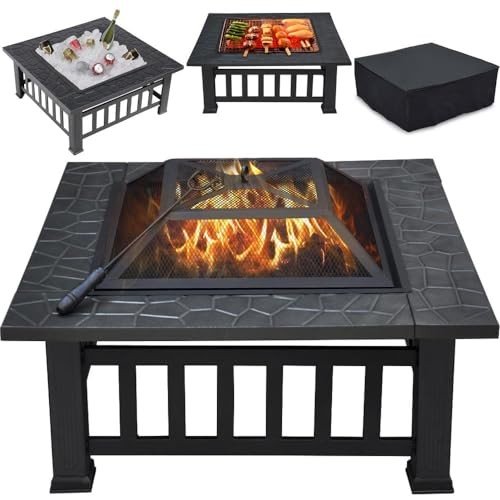Traditional Fireplaces UK Explained In Fewer Than 140 Characters
The Timeless Appeal of Traditional Fireplaces in the UK
Traditional fireplaces have actually long been essential to homes throughout the United Kingdom, going beyond mere energy to end up being focal points of warmth, comfort, and visual appeal. This article digs into the enduring appeal of traditional fireplaces, exploring their history, design variations, setup considerations, and their modern-day importance.
Historic Significance of Fireplaces
The fireplace has played a main function in British homes given that middle ages times. Originally, they were necessary for heating and cooking. Over the centuries, with the development of main heating and technological advancements, fireplaces have actually changed into symbols of heritage and style.
Secret Historical Milestones
Date
Milestone
Description
12th Century
Introduction of Chimneys
Enabled indoor fireplaces to be common, enhanced ventilation.
16th Century
The Renaissance influence
Fireplaces became more ornamental, reflecting the period's designs.
18th Century
The Georgian Era
Developed detailed mantels made from wood and stone.
19th Century
Victorian Era
Introduction of cast-iron and tiled fireplaces.
20th Century
Decrease and Modern Design
Shift towards gas and electric, with some revival of traditional styles.
Types of Traditional Fireplaces
While contemporary styles focus on minimalism, traditional fireplaces often exhibit elaborate workmanship and historic significance. Here are some popular kinds of traditional fireplaces frequently found in the UK:
Open Hearth Fireplaces
- Defined by a large opening and normally built from brick or stone.
- Provides a cozy ambiance and the noise of crackling flames.
- Needs an appropriate flue to reroute smoke outdoors.
Wood-Burning Stoves
- Confined units that burn wood for heat, frequently featuring a glass door.
- More effective than open hearths, providing much better heat retention.
- Readily available in various styles, from rustic to contemporary.
Cast Iron Fireplaces
- Popular in the Victorian period, known for ornate styles.
- Long lasting and popular for exceptional heat conduction.
- Normally function detailed patterns or themes, improving aesthetic appeal.
Tiled Fireplaces
- Frequently decorated with ornamental tiles, these fireplaces display artistic flair.
- Typical in the 19th century, tiles can feature scenes or floral styles.
- Typically matched with wood or cast iron components.
Marble Fireplaces
- Distinguished for their beauty, these fireplaces are generally personalized.
- Marble offers a glamorous finish and matches various interior styles.
- They need cautious setup due to their weight.
Table: Comparison of Traditional Fireplace Types
Fireplace Type
Heat Efficiency
Visual Appeal
Upkeep Needs
Fuel Type
Open Hearth
Low
High
High (chimney cleansing)
Wood
Wood-Burning Stove
High
Moderate
Moderate (wood supply)
Wood
Cast Iron
High
High
Low
Wood/Gas
Tiled
Moderate
Extremely High
Low (if non-usable)
N/A
Marble
Moderate
Extremely High
Moderate
N/A
Factors to consider for Installing a Traditional Fireplace
Installing a traditional fireplace can boost a home's character but features particular considerations. Here are some points property owners must remember:
Building Regulations: Always check local building regulations and guidelines. Setup might require authorization, specifically if structural adjustments are required.
Product Selection: Choose materials that match the home's architecture and personal style. Consider Best Fireplaces UK with aesthetic appeal.
Ventilation: Ensure appropriate ventilation through a chimney or flue to prevent smoke and gases from collecting inside.
Safety Precautions: Install carbon monoxide gas detectors and guarantee all safety procedures remain in place, particularly if using wood-burning options.
Expert Installation: Engage a qualified specialist to ensure safe and reliable installation, following security standards.
Benefits of Traditional Fireplaces
Despite the increase of modern heating services, traditional fireplaces stay beloved for numerous reasons:
Aesthetic Charm
- Includes character to any space.
- Acts as a social centerpiece, enhancing gatherings.
Mental Comfort
- Provides heat not simply physically however mentally.
- Creates a cozy atmosphere ideal for relaxation.
Value Addition to Property
- Improves the appeal of a home to potential buyers.
- Typically increases residential or commercial property worth due to their desirability.
Ecological Considerations
- Wood can be a sustainable resource when sourced sustainably.
- Traditional fireplaces can contribute less to energy expenses compared to electric systems.
Frequently Asked Questions (FAQs)
1. Are traditional fireplaces energy effective?
While traditional fireplaces might not be as energy-efficient as modern heating unit, enhancements in design, such as the installation of glass doors, can boost their performance. Wood-burning ranges are particularly known for being more efficient than open hearths.
2. How frequently should traditional fireplaces be cleaned up?
Chimneys must be checked and cleaned at least once each year, specifically if the fireplace is utilized frequently. This avoids creosote buildup, which can result in chimney fires.
3. Can I utilize a traditional fireplace for gas heating?
Yes, traditional fireplaces can typically be transformed to utilize gas. This includes setting up a gas line and might need a conversion package depending upon the fireplace model.
4. What are the best fuels for wood-burning fireplaces?
Seasoned hardwoods such as oak, hickory, or maple are recommended for wood-burning fireplaces as they burn hotter and longer than softwoods.
5. Can traditional fireplaces be used in modern homes?
Absolutely! Many modern designs incorporate traditional elements, enabling an unified mix of styles. In addition, traditional fireplaces can include a special touch to contemporary homes.
From their historical significance to their modern-day relevance, traditional fireplaces remain an essential function in numerous UK homes. Their enduring appeal is not just rooted in their performance but also in the warmth and charm they provide. Whether one select a classic open hearth or a perfectly tiled fireplace, the option contributes to producing an inviting environment where memories can be made. As property owners end up being more mindful of aesthetic appeals and fond memories, traditional fireplaces are poised to maintain their attraction for generations to come.
